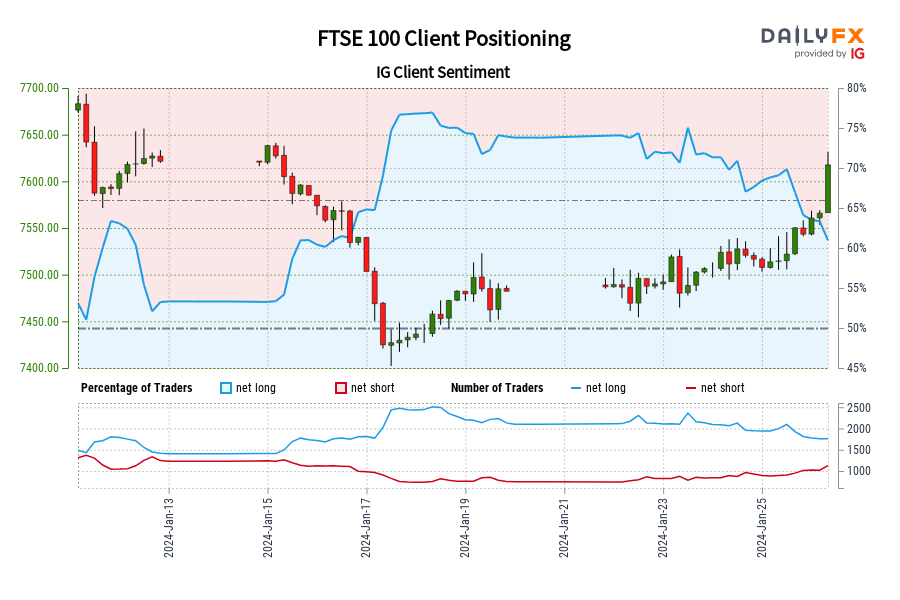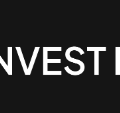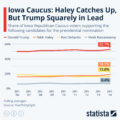Number of traders net-short has increased by 76.38% from last week.
| SYMBOL | TRADING BIAS | NET-LONG% | NET-SHORT% | CHANGE IN LONGS | CHANGE IN SHORTS | CHANGE IN OI |
|---|---|---|---|---|---|---|
| FTSE 100 | BULLISH | 49.12% | 50.88% |
-30.80% Daily -34.58% Weekly |
66.04% Daily 76.38% Weekly |
-1.60% Daily -3.78% Weekly |
| Change in | Longs | Shorts | OI |
| Daily | -34% | 72% | -3% |
| Weekly | -39% | 82% | -5% |
FTSE 100: Retail trader data shows 49.12% of traders are net-long with the ratio of traders short to long at 1.04 to 1. In fact, traders have remained net-short since Jan 12 when FTSE 100 traded near 7,621.60, price has moved 0.14% higher since then. The number of traders net-long is 30.80% lower than yesterday and 34.58% lower from last week, while the number of traders net-short is 66.04% higher than yesterday and 76.38% higher from last week.
We typically take a contrarian view to crowd sentiment, and the fact traders are net-short suggests FTSE 100 prices may continue to rise.
Our data shows traders are now net-short FTSE 100 for the first time since Jan 12, 2024 when FTSE 100 traded near 7,621.60. Traders are further net-short than yesterday and last week, and the combination of current sentiment and recent changes gives us a stronger FTSE 100-bullish contrarian trading bias.




